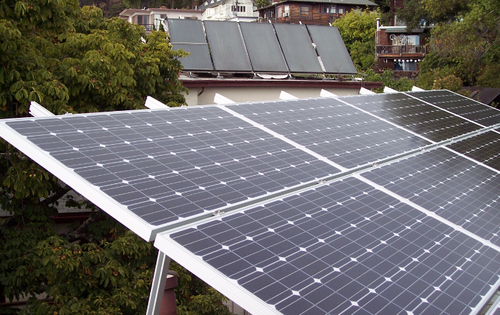SOURCE:
Oh, the irony...California's massive push for adaptation of solar over the last several decades in order to ascertain more "clean" energy is now becoming a problem for landfills.
After 1.3 million solar installs later, the first push of panels are reaching the end of their "typical 25-to-30-year life cycle", according to Yahoo.
And now for the coda to the "clean energy" story: many of the panels are "winding up in landfills, where in some cases, they could potentially contaminate groundwater with toxic heavy metals such as lead, selenium and cadmium" the report says.
One expert told yahoo that only 1 in 10 panels are actually recycled - the rest are contributing to "truckloads of waste", some of which is contaminated, according to the report.
Sam Vanderhoof, a solar industry expert and chief executive of Recycle PV Solar told Yahoo: “The industry is supposed to be green. But in reality, it’s all about the money.”
California has been pushing for solar since 2006, when the state approved $3.3 billion in subsidies. Now, about 15% of the state's power comes from solar - but that belies the environmental disaster disposing of the panels has become.
While about 80% of the panels is recyclable, the process of disassembling the panels to get at the individual materials - including glass and silicon - is "extremely difficult".
Serasu Duran, an assistant professor at the University of Calgary's Haskayne School of Business in Canada commented: “This trash is probably going to arrive sooner than we expected and it is going to be a huge amount of waste. But while all the focus has been on building this renewable capacity, not much consideration has been put on the end of life of these technologies.”
AJ Orben, vice president of We Recycle Solar added: “There's no doubt that there will be an increase in the solar panels entering the waste stream in the next decade or so. That's never been a question.”
It's burdensome to teach those who have the panels what is in them and the proper way to recycle them. Most consumers are not aware of the toxic nature of the panels. And like most everything else that needs to be subsidized in order to be adopted, recycling of the panels doesn't make economic sense, the report adds:
Recycling solar panels isn’t a simple process. Highly specialized equipment and workers are needed to separate the aluminum frame and junction box from the panel without shattering it into glass shards. Specialized furnaces are used to heat panels to recover silicon.
In most states, panels are classified as hazardous materials, which require expensive restrictions on packaging, transport and storage. (The vast majority of residential solar arrays in the U.S. are crystalline silicon panels, which can contain lead, although it's less prevalent in newer panels.
Thin-film solar panels, which contain cadmium and selenium, are primarily used in utility-grade applications.) Orben said the economics of the process don’t make a compelling case for recycling.
Amanda Bybee, co-founder of SolarRecycle.org, said: “There's an informational gap, there's a technological gap, and there's a financial gap that we're working on.”
And while California regulates how the panels can be collected, it doesn't change the end destination of many of the materials, Orben said: "What that [rule] does is really just changes how that material is handled, managed, stored, and transported. It doesn't change how that material is actually processed.”
Drew Johnstone, a sustainability analyst for Santa Monica, concluded: “It's going to be a really large issue in a number of years, So it would behoove local governments, county, state, and it can go federal too, to have a plan in place for all these panels that will reach their end of life in 10 to 15 years.”
